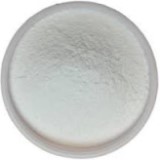 |
Calcium 10-undecenoate or Calcium Undecylenate USP Grade Supplier Exporter Manufacturers' Representative |
Email: info@ammol.org |
Call Toll Free +1-855-552-6665 |
Calcium 10-undecenoate or Calcium Undecylenate
CAS Number: 1322-14-1
Molecular Formula: C22H38CaO4
Molecular Weight: 406.61

Calcium 10-undecenoate or Calcium Undecylenate
Calcium Undecylenate USP Grade Specifications
C22H38O4Ca -- 406.61
10-Undecenoic acid, calcium (2+) salt.
Calcium 10-undecenoate.
Calcium Undecylenate contains not less than 98.0 percent and not more than 102.0 percent of C22H38O4Ca (calcium undecylenate), calculated on the dried basis.
Identification:
A: A filtered solution (1 in 20) in 3 N hydrochloric acid responds to the tests for Calcium.
B: Transfer 40 mL of water and 10 g of calcium undecylenate to a 250-mL separator. Cautiously and slowly add 10 mL of hydrochloric acid, while swirling. Insert the stopper, and shake. [NOTE: The separator will become quite warm, and pressure must be carefully and frequently relieved through the stopcock. If a curdy, white material remains after 5 minutes of shaking, add additional hydrochloric acid, 1 mL at a time, and shake until a clear oily phase is formed.] Allow the phases to separate, drain, and discard the bottom aqueous layer. Drain and discard the middle oily layer, if present. Filter the top layer of undecylenic acid through a pledget of cotton into a 10-mL graduated cylinder, noting the volume obtained. Transfer the filtrate to a 250-mL flask, and add an equal volume of aniline. Reflux for 1 hour, swirling the flask occasionally. Allow to cool, and pour 60 mL of alcohol through the condenser into the flask. Remove the flask from the condenser, add 1 g of charcoal, and stir. Filter the slurry into a 250-mL beaker. Add water drop-wise until a few crystals form or the solution becomes slightly cloudy. [NOTE: If too much water is added, an oil will form. Add alcohol dropwise until the oil dissolves.] Allow the mixture to stand or refrigerate until crystals are formed. Collect the crystals on a filter paper inserted in a 45-mm porous glass filter funnel. Wash the crystals with 75 mL of 25% alcohol: the crystals have a clean, white, glossy appearance. If not, re-crystallize by dissolving the crystals in about 50 mL of alcohol. Add about 1 g of charcoal, stir, filter into a 150-mL beaker, and continue as directed above, beginning with “Add water dropwise.” Dry the crystals in vacuum at 50C for 2 hours: the crystals so obtained melt between 66 and 67.5. [NOTE: If the melting point is low, additional drying or recrystallization may be necessary.]
Loss on drying: Dry it at 105 for 2 hours: it loses between 2.0% and 5.7% of its weight.
Particle size, Method: Test in accordance with this procedure, except to use not more than 25 g, and except that a single No. 100 sieve is used and is to be shaken for not less than 30 minutes or until sifting is practically complete: not less than 99.0% of it passes through a No. 100 sieve.
Limit of free undecylenic acid: Transfer 10 g of Calcium Undecylenate, accurately weighed, to a 400-mL beaker, add 250 mL of solvent hexane, and mix for 2 hours using a magnetic stirrer. Filter into a 500-mL flask, evaporate with the aid of a current of air to about 20 mL, and add 100 mL of neutralized alcohol. Add 3 drops of phph TS, and titrate with 0.1 N sodium hydroxide. Each mL of 0.1 N sodium hydroxide is equivalent to 18.43 mg of C11H20O2: not more than 0.1% is found.
Please visit SDS Safety Data Sheet of Calcium 10-undecenoate or Calcium Undecylenate Suppliers.
American Molecules, also known as ammol.org is a distributor, supplier and manufacturers' representative of all types of Pharmaceuticals, Functional Ingredients, Excipients and Specialty Chemicals in Texas USA. Our principals manufacture supply and export USP NF BP, Ph Eur, etc grades of chemicals pure and reagent grade, mineral fortifiers, FCC food grade. Tailor made particle size and customized specifications are offered. The principal's facility is having one or more of the certifications like FDA approval and GLP, cGMP, ISO9001, ISO14001, ISO/IEC 17025, ISO22000, FSSC 22000, ISO45001, FSSAI, Kosher, HALAL, COPP, WHO-GMP certified and Written Confirmation (WC) for export to Europe is available. The manufacturers suppliers and exporters observe WHO Good Manufacturing Practices and Good Laboratory Practices.





Suppliers and Manufacturers' Representative:

9910 Bent Oak Dr
Houston, TX 77040, USA
Call Toll Free: 1-855-55-AMMOL 1-855-552-6665
Email: info@ammol.org